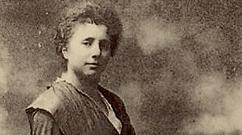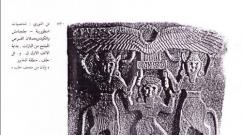Mastitis in a nursing mother: how to recognize and cure it. Mastitis in a nursing mother: symptoms and treatment. What to do with stagnation of milk?
Symptoms of mastitis in nursing appear simultaneously or alternately. In many ways, it depends on the mother's immunity, her lifestyle, the form of mastitis and the period of initiation of treatment.
The first symptoms of the disease are very similar to the common cold, so only a doctor can correctly diagnose, who should be contacted immediately after a fever, weakness and severe breast engorgement.
The cause of mastitis is untreated lactostasis. The first signs begin to appear after about three days. Sometimes symptoms are noticeable after a few hours.
The main manifestations of mastitis include:
- Hyperthermia - body temperature rises above 38 degrees. Over time, symptoms of intoxication of the body are noticeable, fever, headaches, chills, and weakness appear.
- Soreness of the mammary glands - aching pains are constantly felt in the chest, which greatly increase during feeding.

- An increase in the lymph nodes in the armpit indicates that the chest needs to be urgently treated, as an inflammatory process develops in the body.
- Milk changes - purulent or bloody issues. Milk changes its taste, color and smell.
- External changes - the skin of the chest turns red, during touching there is a sharp and strong pain, the bust of the nursing one seems to be on fire, seals are palpable in the mammary gland.
Mastitis often affects both breasts at the same time. With a disease, you can not breastfeed the baby, so after treatment there are difficulties with restoring lactation. In most cases, the child is completely transferred to artificial mixtures.
Missing this moment, you can bring yourself to the appearance of pus in the milk. Purulent mastitis progresses rapidly, if not treated at this stage, blood poisoning occurs, gangrene develops and it becomes necessary to perform a mastectomy (removal of the mammary gland).
Manifestations at different stages
Each form of mastitis has specific symptoms.
![]() The longer the disease is left without the attention of doctors, the worse the consequences for the nursing woman and child will be.
The longer the disease is left without the attention of doctors, the worse the consequences for the nursing woman and child will be.
- The serous form of mastitis is accompanied by a slight increase in the mammary gland, soreness appears on palpation, the body temperature rises slightly. Without proper treatment, the serous form quickly turns into an infiltration one.
- Infiltration stage of mastitis - general state nursing mother worsens, there are signs of intoxication of the body. The breast greatly increases, becomes painful, reddening of the skin, induration and swelling appear. Body temperature exceeds 38 degrees, fever develops. All symptoms are aggravated when trying to breastfeed the baby.
- Purulent form of mastitis - develops in the absence of full therapy at the infiltration stage. It is characterized by the presence of purulent inflammation in the mammary gland. When examining a nursing mother, seals are felt in the chest in which liquid is present (pumping of liquid is felt under the fingers). Body temperature rises to 40 degrees.
The purulent stage of mastitis is divided into phlegmous and gangrenous. In the first case, there is no capsule with pus in the mammary gland, so it spreads to the entire glandular tissue. Inflammation quickly moves from one place to another and spreads to the entire mammary gland and adjacent tissues. The axillary lymph nodes become very inflamed and enlarged.
 The gangrenous form is characterized by the development of necrosis. In the mammary gland of a nursing woman, circulatory processes are disturbed, the patient's condition becomes critical. She needs immediate medical care. Surgery is often required.
The gangrenous form is characterized by the development of necrosis. In the mammary gland of a nursing woman, circulatory processes are disturbed, the patient's condition becomes critical. She needs immediate medical care. Surgery is often required.
Purulent mastitis is considered the most dangerous stage of the disease. It develops rapidly and within 2-3 hours the woman has all the symptoms of the disease. She feels severe pain in her chest, the temperature rises to 40 degrees, and bloody and purulent discharge mixed with milk protrude from the nipples. It is impossible to restore lactation after such a disease.
If you do not start treating the pathology in a nursing woman in time, purulent mastitis turns into an abscess of the mammary gland. Such a disease requires immediate surgical intervention. Delay in treatment adversely affects general health women and poses a danger to her life.
Prevention of mastitis
 To prevent the development of mastitis, you must carefully monitor your health and follow certain breastfeeding rules:
To prevent the development of mastitis, you must carefully monitor your health and follow certain breastfeeding rules:
- you can not take long breaks between feedings, you need to put the baby to the breast on demand, without waiting until several hours have passed;
- only with a strong need, you can resort to pumping with breast pumps or hands;
- it is regularly necessary to change the position for breastfeeding and follow all the rules of attachment, proper grip of the nipple and the duration of feeding;
- it is important in a timely manner to prevent infection from entering the body;
- it is better to use special bras for feeding, they should fit in size and be made from natural materials;
- during breastfeeding, a nursing mother needs to be protected from hypothermia, especially the mammary glands need to be protected from the cold.
You should not complete lactation ahead of time, without good reason. Long-term breastfeeding on demand will protect a woman from most diseases of the mammary glands and pelvic organs.
The first weeks of lactation are the most difficult. The body undergoes hormonal changes, it is very weakened and exposed to negative external factors.
 Mastitis develops when:
Mastitis develops when:
- lactostasis;
- wearing an unnatural and tight bra;
- hypothermia;
- injury to the mammary glands;
- lack of fluid intake;
- non-observance of hygiene rules;
- weakened immunity.
When chills, weakness, drowsiness and signs of dehydration appear, you should not run to the pharmacy for antipyretics and painkillers, but call a doctor or go to see him. Only after the analysis of blood and milk for sterility can we conclude that there is an infection or virus in the body. The attending physician should decide how and how to treat the pathology.
When diagnosing an inflammatory process at an early stage, doctors do not require cessation of lactation. When all risks are weighed and after the examination of the patient, she is prescribed drugs that allow her to breastfeed, or it is advised to temporarily transfer the child to artificial feeding and express your milk regularly with your hands or with a breast pump.
 If a nursing woman is prescribed antibacterial drugs, it is better to stop breastfeeding for a while. Only after a therapeutic course of treatment can you restore normal lactation and continue breastfeeding.
If a nursing woman is prescribed antibacterial drugs, it is better to stop breastfeeding for a while. Only after a therapeutic course of treatment can you restore normal lactation and continue breastfeeding.
Antibiotics have a negative impact on the health of an adult, disrupting the balance of microflora in the digestive system; in a baby, these drugs, penetrating into the body with mother's milk, cause serious complications.
In the absence of treatment, pathogenic microorganisms are transmitted through milk to the child, which cause disorders in the work of a fragile organism. To a greater extent, they contribute to the appearance of pathologies in the gastrointestinal tract. The baby has disorders, dysbacteriosis, he vomits after trying to feed, he is often tormented by constipation, gaziki and other troubles.
Mastitis is what women who have given birth to little happiness in the form of a son or daughter are most afraid of. Inflammation of the mammary glands often occurs in the first 3 months after birth. However, in the subsequent time, the likelihood of mastitis, although somewhat reduced, still poses a constant threat.
How not to miss the first symptoms of mastitis in a nursing mother, what to do and what treatment can a doctor prescribe? Every responsible mother who wants to maintain her own health and protect her baby from negative impacts should know the answer to all these questions.
Mastitis is an inflammation of the lobules of the mammary glands due to infection in the milk ducts (see photo). The inflammatory process in the breast of a nursing woman is called lactational mastitis. The process of occurrence is due to two points: getting into the glandular tissues of infection and the impact of a provoking factor.
Mastitis in the absence of timely treatment goes through several stages with increasingly severe symptoms. This disease is a serious threat to a woman's health and can cause a negative impact on the child if he continues to be fed with sick breasts.
Causes of mastitis while breastfeeding, risk factors
In 90% of cases, inflammatory pathology is caused by Staphylococcus aureus. However, the group of microorganisms “guilty” of mastitis is much larger - it includes streptococci, fungi, and even E. coli. The infection enters the mammary glands from the external environment, with the blood flow, through the lymphatic system.
Since the blood supply to the breast is sufficiently developed in a nursing mother, inflammation often covers large areas of the mammary gland, capturing several of its lobes at once. Causes of mastitis:
- Infection through cracks in the nipples;
- Infection with bacteria that have entered the gland with blood or lymph from foci of chronic infection - carious teeth, chronic tonsillitis, cystitis, etc.
However, an additional incentive is needed for the development of infection in the chest. And most often, in 95% of cases, the impetus for the development of lactational mastitis is lactostasis, left untreated for 3-4 days.
Factors contributing to the occurrence of postpartum mastitis include:
- the first birth - the mammary glands and their milk ducts are not sufficiently prepared for the breastfeeding regimen;
- the period of refusal of breastfeeding;
- reduced immunity - observed in almost all women in the postpartum period;
- hypothermia;
- , breast tumors;
- mastopathy in history;
- insufficient hygiene of the mammary glands;
- all situations that provoke lactostasis are insufficient emptying of the milk lobules, improper breastfeeding tactics, compression of the glands, etc.
Stages of mastitis
In its development, mastitis is the next stage of untreated stagnation of milk in the glands. With further development, inflammation goes through the following stages:
- serous (uninfected mastitis) - manifested by aggravated symptoms of lactostasis, but the infection has not yet multiplied;
- infiltrative - occurs after 1-2 days, is characterized by the formation of seals, reaching 2-3 cm in diameter;
- purulent - rapid reproduction of infection, suppuration of infiltrates is accompanied by severe intoxication and a serious condition of a woman;
- abscessing - the formation of purulent cavities.
All phases of inflammation proceed rapidly with a rapid increase in the severity of symptoms.
Signs and symptoms of mastitis in a nursing mother by stage

The clinical picture can clearly indicate the stage of development of mastitis. So, the first signs of serous mastitis in a nursing mother are as follows:
- Reduced lactation - very important feature separating lactostasis and incipient mastitis;
- Chest pain that does not disappear after pumping;
- The temperature is from 38ºС, and in the armpit on the affected side is slightly higher;
- Redness of the skin.
Symptoms characteristic of infiltrative mastitis:
- Influenza state - chills, muscle pain, temperature fluctuations from 37-39ºС;
- Painful enlarged axillary lymph nodes;
- heaviness in the chest, aching pain;
- Clear probing of compaction zones;
- Insufficient milk flow even when trying to express.

Lactational mastitis in the purulent stage has the following signs:
- Severe swelling of the affected tissues, constant severe pain;
- Hyperthermia up to 40ºС, severe febrile condition;
- Skin change over the affected area - purple or cyanotic color;
- The expressed milk has an admixture of pus.
When contacting a doctor, the following signs of inflammation may appear:
- blood test - leukocytosis, high ESR (starting from the serous stage);
- Ultrasound - fixation of purulent cavities.
Treatment of mastitis while breastfeeding
The radical nature of treatment tactics directly depends on the timing of the visit to the gynecologist / mammologist and the stage of development of inflammation. If a woman suspected mastitis in time and went to the clinic in the first 2 days, most likely her treatment will be limited to conservative measures.
mastitis therapy
- Antipyretics - Paracetamol is harmless to the baby (feeding at the serous stage does not stop);
- Antispasmodics - No-shpa, if you refuse breastfeeding, you can take stronger painkillers;
- Improving the outflow of milk - Oxytocin drops by mouth or intramuscular injection;
- Treatment of nipple cracks with Bepanten, Perulan;
- Antibiotics - with a protracted course, a course of up to 10 days with simultaneous inhibition of lactation.
Surgery
If no dynamics is observed within 2 days of antibiotic therapy, they resort to surgical intervention. Festering foci are excised with the preservation of healthy tissues, it often becomes necessary to install drainage.
The volume of surgical intervention is the larger, the big square breast damage.
Mastitis: home treatment
It should be understood that self-treatment of mastitis at home is fraught with further development inflammation and poses a threat to both mother and baby.
Often used without a doctor's prescription Amoxicillin, Penicillin have absolutely no effect on Staphylococcus aureus. Ciprofloxacin, Cefalexin, Amoxiclav are considered effective drugs for mastitis.
Rules for the treatment of mastitis at home:
- Don't expect to cure lingering mastitis (lack of improvement in the first 2-3 days) without antibiotics. Drugs are prescribed only by the attending physician.
- Gentle breast massage is regularly carried out without excessive zeal and compression. The mode of holding is every 2 hours, even at night.
- No home remedies - applying cabbage leaves, lotions with honey and Kalanchoe, oil compresses - will not be able to destroy the infection that develops in the glands. Folk recipes can only ease the pain.
- No thermal procedures - warming up, alcohol compresses, etc. Heat will only increase swelling, and increased blood circulation due to warming will provoke further spread of the infection.

Breastfeeding with mastitis (including on the affected side) continues at the initial stage of inflammation. During this period, it is necessary to empty the mammary glands as much as possible. After each feeding, the residues are decanted and cold is applied for 15 minutes.
The appointment of antibiotics is a reason to temporarily wean the baby from the breast and transfer to feeding with infant formula. Almost all antibiotics that enter the blood are also in breast milk. Their entry into the baby's body can cause an unpredictable reaction - from an allergic rash and dysbacteriosis to a state of shock.
When you can return to breastfeeding again - the attending physician determines, taking into account the progress of treatment and the period of withdrawal of antibacterial drugs from the mother's body in order to avoid getting to the baby with milk.
To avoid disease mastitis and its treatment, nursing mothers in the postpartum period should observe:
- Breast hygiene - washing before each feeding and wiping with a linen towel to prevent cracking.
- Exclusion or, at least, timely elimination of lactostasis - an appropriate feeding regimen, proper attachment newborn to the chest.
- Exclusion of compression and trauma - a bra that does not compress the chest, sleep on the back or side.
- complete sleep, rich in vitamins nutrition, rational drinking regimen.
- Immunity support - treatment of chronic foci of infections.
- Avoiding emotional reactions to stressful situations.
Share:
- lactational, affecting nursing mothers;
- fibrous or cystic, not related to breastfeeding;
- breast of newborns caused by engorgement of the mammary glands due to a violation hormonal background. This occurs when lactogenic hormones from the mother's blood enter the child's blood. It does not need to be treated and it is impossible to squeeze fluid out of the nipples. Mastitis of this kind goes away on its own.
According to the course of inflammation, there are:
- serous mastitis (initial);
- infiltrative mastitis;
- purulent mastitis requiring antibiotics, and in advanced cases surgical intervention.
Causes of mastitis in a nursing mother
The main reason for the development of mastitis is the stagnation of milk. It occurs when the newborn is not properly attached to the breast, its emptying is insufficient, and cracks in the nipples. Pathogenic microbes easily penetrate the milk passages through the lymphatic tract, causing severe inflammation. Cracks open the way for staphylococci, streptococci from the mouth of the baby. The ingress of bacteria can also be due to dirty linen, non-compliance with hygiene standards for breast care during pregnancy and feeding.
Also risk factors include:
- diabetes mellitus, which reduces the body's resistance;
- the presence of implants in the mammary glands;
- infectious diseases;
- long-term treatment with hormonal drugs that suppress the immune system;
- smoking that causes circulatory disorders - about smoking with hepatitis B;
- squeezing uncomfortable bra;
- malignant neoplasms that can affect the mammary gland of a nursing mother;
- chest injuries, falls, bruises;
- taking a contrast and cold shower;
- a common cause of mastitis is considered to be external or internal infection of the mammary glands with Pseudomonas aeruginosa or Escherichia coli, streptococci, staphylococci, etc.
Signs of mastitis in a nursing woman
When mommy is breastfeeding feels like she:
- thickened and enlarged mammary glands;
- puffiness appeared;
- acute pain, malaise, chills, fever;
- chest from the body hot, tense;
- when probing the chest, a tight knot is felt;
- the affected area is reddened;
- increased pulse;
- decreased pressure;
- insomnia appeared
she should see a gynecologist immediately. These are signs of mastitis. In many maternity hospitals, doctors are responsible for women in labor for a month, and they can seek the help of experienced doctors at the first symptoms of mastitis.
The main task of a nursing mother is to save breastfeeding, monitor her health and, at the first symptoms, not be lazy and consult doctors. Otherwise, the process may acquire a pathological course - the seal in the thickness of the chest will soften, feeding will become unbearably painful, the temperature will rise even more, and pus may be mixed with milk. If help is not provided at this stage, the disease will acquire a phlegmonous, and sometimes gangrenous character. With phlegmonous mastitis, pus spreads into adjacent tissues. Gangrenous mastitis causes tissue death due to impaired circulation. This is an extremely severe pathology.
How to cure mastitis in a nursing mother
The treatment of mastitis depends entirely on the nature of its development, signs and stage. First, the doctor will refer the patient to:
- general blood analysis;
- bakposev discharge from the nipple;
- Ultrasound of the mammary glands, which allows you to accurately determine the diagnosis;
- mammography;
- additional studies to exclude infectious diseases - tuberculosis, syphilis, actinomycosis, oncology.
Mastitis treatment can be traditional with the use of medicines and surgical with operations.
If, during diagnosis, purulent symptoms of mastitis are found in a nursing mother, the breast is opened. Pus comes out, alleviating the patient's condition, and the healing process is greatly accelerated. The focus of inflammation is washed with antiseptics. A woman is prescribed painkillers and antibacterial drugs with an antiseptic bandage applied to her chest.
Traditional treatment includes:
- antibiotic therapy;
- regular pumping. At the same time, it is strictly forbidden to feed due to the presence of pathogenic microorganisms in the milk;
- suppression of lactation with drugs;
- taking anti-inflammatory drugs that reduce pain;
- local therapy - compresses and lotions on the mammary glands with dimexide for resorption of seals.
With stagnation of milk in a nursing mother
If mastitis during breastfeeding is provoked by stagnation of milk, the baby sucks poorly, emptying the breast insufficiently, lactostasis may occur. It is he who is the first cause of mastitis.
The doctor prescribes conservative treatment:
- pumping;
- frequent application of the baby;
- breast massage;
- hormone therapy that suppresses lactation.
With an infection
When mastitis is caused by an infection, the doctor prescribes:
- taking antibiotics. Antibiotics are usually prescribed after bakposev, which reveals which drugs the infection is sensitive to. Traditionally, these are drugs of the penicillin group that suppress staphylococcus aureus: Amoxiclav, Clindamycin, Cefalexin. They are prescribed both intravenously, intramuscularly, and orally. Amoxiclav is rapidly excreted by the body and is allowed during breastfeeding. It is taken immediately after feeding, strictly observing the dosage;
- painkillers;
- pumping;
- physiotherapy;
- massage to eliminate the stagnation of milk. Massage is done by hand light movements. To do this, you can invite a specialist who knows the intricacies of the procedure or do it yourself. It is impossible to massage the nipples and areola;
- hormonal drugs.
With purulent mastitis, you can not feed. But if it is caused by lactostasis, regular attachment of the child to the diseased breast is mandatory.
Treatment with folk remedies
You can be treated with folk remedies at home, but only after visiting a doctor and using them at the same time as taking traditional treatment. Folk methods will help relieve pain, improve condition and speed up recovery so that a nursing mother can return to the normal process of breastfeeding.
Important! You can not warm up purulent mastitis. This will speed up the spread of microbes, increase their reproduction and exacerbate the situation many times over. Inflammatory processes in the body cannot be treated with heating.
Can be applied:
- Rice lotion. Rice starch is diluted to a creamy consistency and applied to the inflamed rudi. It will noticeably improve the condition in a couple of hours.
- Fresh vegetables. A cabbage leaf smeared with honey or coltsfoot leaves is applied to the seals. Grated carrots help a lot. All funds are fixed with a bandage, cloth, bra. Fresh vegetables relieve the inflammatory process.
- Grated apple mixed with butter is applied all night, reinforced with gauze or plaster.
- A good mix rye flour, butter with whole milk. The mass is applied to the chest and fixed.
- Sore spots are smeared with badger fat.
You can also use grandmother's methods as a prevention of mastitis, when mommy suspects that her breasts have become thickened and inflamed. If a folk remedies do not help, then treatment at home is no longer possible and the mother should immediately see a doctor.
Prevention of mastitis
To avoid mastitis in a nursing mother, you should:
- follow the rules of personal hygiene. This does not mean that before and after feeding you need to run to the bathroom and wash your nipples with soap. Soap will wash away the protective fatty layer and open the way for germs. It is enough to apply a warm shower once a day;
- put the baby to the breast regularly;
- do not express after feeding, but only if necessary leave milk to the baby;
- use different postures when feeding for better emptying of the breast in all milk lobes;
- avoid hypothermia;
- feed alternately, then left, then right breast;
- if cracks occur, use a healing ointment or cream. Bepanten, Videstim, Solcoseryl - popular ointments for cracks in the nipples;
- do breast massage, which is an ideal prevention and treatment of milk stagnation;
- wear a loose bra that will not squeeze the chest, back and armpits;
- wean naturally. Constriction of the mammary glands often leads to mastitis. If you need to abruptly wean from the breast (serious illness of the mother, long-term use of drugs), it is necessary to consult a doctor and be sure to express until lactation gradually fades.
If a nursing mother still had a chance to find out what mastitis is, then a quick visit to the doctor and the implementation of all necessary action, will allow you to return to breastfeeding in a short time.
The causes of mastitis can be infections that entered the body through the formed cracks in the nipples. Hypothermia, chest injuries also contribute to the formation of the disease. Mastitis also develops in the presence of tumors in the mammary gland. But the most common cause of the disease is lactostasis.Mastitis according to the nature of the inflammatory process is divided into three stages: serous, infiltrative and purulent. With serous mastitis, the body temperature of a nursing mother rises to 38 ° C, pain in the head and mammary gland may occur. There is weakness and chills. At the infiltrative stage, the diseased breast swells and increases in volume. Body temperature rises to 39oC. With purulent mastitis, the skin at the site of the focus of the disease acquires a red tint. Dry mouth appears, and pus can be seen in the expressed milk.
Mastitis treatment
Self-medication is absolutely impossible to do. The disease may worsen and become more severe. At the first sign of mastitis, you should consult a doctor. He, before prescribing therapy, writes out referrals for tests: a complete blood count, ultrasound of the mammary glands, seeding of milk for sterility. But treatment is always prescribed immediately, without waiting for the results of the tests.If the cause of mastitis was lactostasis - stagnation of milk, the doctor prescribes treatment without the use of antibacterial drugs. For treatment, it is recommended to express milk after each breastfeeding, often apply the baby to the breast, massage the mammary gland and drink hormonal drugs that improve milk flow and reduce its production.
With mastitis of an infectious nature, antibiotics are prescribed. In addition to them, local anesthetics, physiotherapy and hormonal drugs are used. You also need to express milk.
If mastitis has reached the purulent stage, antibiotics are used for the first three days. In case of no improvement, surgical intervention is prescribed. During the operation, surgeons open the abscess, remove its contents and treat the cavity with an antiseptic. After the operation, a course of antibiotics is again prescribed.
To avoid mastitis, you should follow the rules of personal hygiene, choose the right underwear for the breast, feed the baby on demand, apply wound healing ointments after each feeding, and monitor the correct position of the baby during breastfeeding.
Mastitis is an inflammation of the breast that most often occurs during breastfeeding. This disease responds well to treatment not only by traditional, but also by folk methods.
You will need
- - Antibiotics;
- - May honey;
- - vegetable oil;
- - Kalanchoe juice;
- - gauze;
- - camphor oil;
- - medicinal sweet clover;
- - eucalyptus;
- - Japanese Sophora;
- - butter.
Instruction
Treatment of mastitis at any stage should be carried out under the close supervision of a specialist. At the first signs of malaise, violation of the outflow of milk from the glands, an increase in body temperature and inflamed cracks in the
Attachment and often experience difficulties, having no experience in feeding and the opportunity to get sensible and correct advice.
With improper attachment and rare feedings, stagnation of milk in the chest () may occur, and the development of such a formidable condition as mastitis (inflammation of the breast). It is the causes and consequences of mastitis that we will discuss in this article.
What is mastitis
This is inflammation in the tissues of the mammary gland as a result of a violation of the outflow of milk (aseptic mastitis) or, more often, the penetration of pathogenic microbes into the ducts against the background of a general decrease in immunity.
Contrary to popular belief, the chest cannot be caught cold, but general hypothermia reduces the immune defenses of the body and in the presence of foci of chronic infection in a nursing mother (caries, tonsillitis, pyelonephritis), the infection can easily enter the mammary gland with blood flow and cause inflammation there.
Mastitis in a nursing mother symptoms
Mastitis presents with symptoms similar to lactostasis, usually complicating it. But with mastitis, all manifestations are much more pronounced and brighter.
For uninfected mastitis:
- Deterioration of well-being with pain in the area of inflammation, soreness is felt when changing body position and walking.
- The temperature rises above 38 degrees, there may be chills and headache.
When an infection is attached (more often it is staphylococcus aureus from the skin of the chest or E. coli with blood flow):
- Part of the chest turns red.
- The chest feels tight, hot and painful to the touch.
- The temperature stays high.
- Muddy purulent contents may be discharged from the nipple along with milk.
Infected mastitis can give a rather dangerous complication - an abscess - a seal with a capsule and pus inside.
Usually, mastitis is the result of improper actions in lactostasis, pus rarely forms in one or two days, this happens when a woman refuses to seek help in the initial stages of the process, refuses to feed, pulls her breasts, or has untreated infected cracks.
It is important to remember that mastitis and even an abscess are not an indication for stopping breastfeeding, they are successfully treated by combining with feeding the baby. Breast emptying is one of the main factors in recovery.
Mastitis treatment at home
In the treatment of mastitis, all the same actions for emptying the breast are necessary as with lactostasis, but mandatory medical supervision is also required. If the day does not get better, it is necessary to prescribe antibiotics that are compatible with breastfeeding.
- Choose a position so that the baby's chin is looking at the area of the seal. The child is under your arm, you lie on your side or hang over the child. It will fully cope with the resorption of the resulting seal, no one, except for the baby himself, can!
- Breastfeed your baby as often as possible, but at least once every one to two hours.
- Shorten the intervals between night feedings.
- Start feeding your baby from the affected breast.
If these measures are not enough for about a day, or the symptoms of mastitis continue to grow, you need to start “clearing” the chest.
The necessary decontamination is carried out as follows:
- apply a warm compress to the chest or direct a warm shower to the chest, gently massaging the area of \u200b\u200bdensification;
- carefully out of this area;
- after pumping, to relieve swelling and soreness, apply a cold compress (but not ice) to the chest.
Such procedures should not be carried out often, no more than three times a day, more often putting the baby to the chest. The use of Traumeel cream, Arnica homeopathic ointment, Malavit solution (in half with water, moisten a napkin) can help relieve swelling and soreness.
There is also a recipe for a compress that relieves inflammation, which is often recommended in maternity hospitals for women who are faced with lactostasis or mastitis. Usually it is prepared by the woman's relatives and brought to her in the maternity ward.
- Yarrow - 2 tablespoons;
- St. John's wort - 2 tablespoons;
- Calendula - 1 tablespoon;
- 1/2 liter of boiling water;
- boil for 2 minutes;
- 30 minutes to insist;
- Strain;
- Bring the young mother hot.
Antibiotics are indicated for increased pain, increased redness or induration, fever, and general malaise. Against the background of proper treatment (with or without antibiotics), it should become easier during the first two days - the temperature decreases, the pain subsides, and the induration and redness disappear in two to five days. If it is not put better even on antibiotics - immediately to the surgeon.
- Be sure to rest and be less nervous. only hurt the treatment.
- Breastfeed your baby at least as usual, and best of all, apply the baby more often both day and night. Lacto stasis and mastitis do not pose any danger to the baby.
- Use heat before feeding and before pumping, it will help in improving milk flow.
- The high temperature that accompanies mastitis helps in the fight against infection - microbes die faster with a fever. Bring down the temperature only if you feel unwell.
- Taking nurofen can relieve chest pain without harming your baby.
With the right treatment and your actions, you can quickly cope with lactostasis and prevent mastitis. If the disease is advanced, a surgical operation can be performed to preserve the health of a nursing woman, which cleans out the formed abscess in the chest. Fortunately, to similar method modern medicine resorts extremely rarely.
; .
We are especially grateful for the preparation this material pediatrician Alena Paretskaya.













